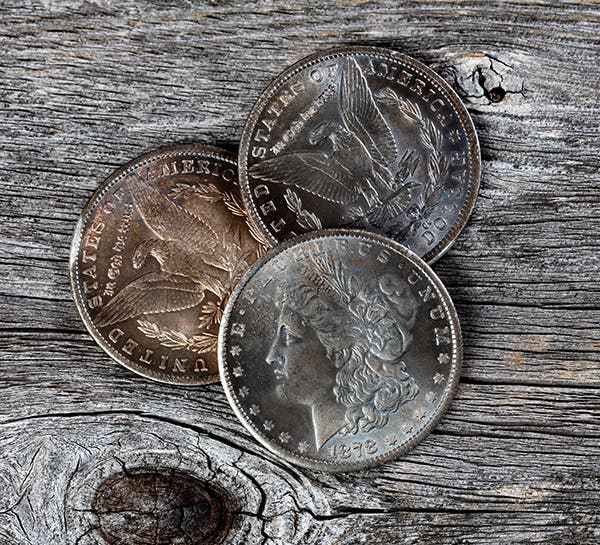Time near for 1884 Trade dollar to shine
A little mystery tends to help a great rarity. So far, that has not really been the case for the 1884 Trade dollar. It has usually been in the shadow,…
A little mystery tends to help a great rarity. So far, that has not really been the case for the 1884 Trade dollar. It has usually been in the shadow, and about half the price, of the even rarer 1885 Trade dollar. Fortunately, the time for the 1884 to break out and reach its own $1 million or more price may be right around the corner.
By 1884, officials were calling for an end to Trade dollars. Why there continued to be proof Trade dollar production after the last business strikes had been made in 1878 is an interesting question. Unfortunately, there are a lot of questions about the 1884 but not very many answers. Proofs simply kept being made.
The final order to cease Trade dollar production came very early in 1884. It did not, however, come on Jan. 1 of that year, so there was technically time for a few legal 1884 proofs.
While we know there was this window of opportunity, we are not certain whether any 1884 Trade dollars were actually produced before the final order to halt production was received. In a sense, it does not matter, since an 1884, legal or illegal, is a great treasure.
Official Mint records for 1884 show that 264 Trade dollars, all proofs, were reportedly struck. If so, the coins were melted, with the exception of 10 examples. For 1885, the official report is blank, although we know that five exist with the 1885 date.
Precisely what happened in 1884 is anyone’s guess. The known examples of the 1884 turned up in the estate of William Idler, a famous numismatist of the time, and were later sold by his son-in-law, John W. Haseltine, when he was in partnership with Stephen Nagy.
There were rumors, but no real hard details, about 1884 Trade dollars in the period between 1884 and 1908. Why they were kept hidden is unknown, but perhaps that points to uncertainty about their legal status.
However, it appears that, despite this secrecy, there was no belief that the coins might be worth high prices. The first coin Haseltine reportedly offered anyone was for just $40. Of course, $40 was a lot of money in the early 1900s, but it was not at the level of great rarity pricing.
There were a certain number of critics, and the words “fraud,” “counterfeit,” and “pattern” saw print in describing the newly discovered 1884 Trade dollars. Such charges could not have helped their price. That said, the newcomers to the small number of great rarities brought prices of $150 to $400 in the early years.
At least initially, the 1884 Trade dollar (usually as part of an 1884 proof set) seemed to be getting more attention than the 1885. Eventually, however, the greater numbers of 1884s took a toll. Since it had double the mintage of the 1885, it was priced at about half the level of the 1885, and it held that way to this day.
It also did not help that whenever an 1884 was offered at auction, it was usually from an important collection that included an 1885, which would of course grab the headline price.
In a sense, nothing has changed today, except maybe the market. The 1885 has struggled to top $1 million, so there is no certainty that the 1884 is going over the $1 million mark in a public auction. But based on most other recent prices, it should. When (and not if) that happens, the 1884 may finally get an identity other than the more available of the Trade dollar rarities. It is a major rarity, and it has a very interesting story as well.
This article was originally printed in Numismatic News. >> Subscribe today.
More Collecting Resources
• Subscribe to our monthly Coins magazine - a great resource for any collector!
• Keep up to date on prices for Canada, United States and Mexico coinage with the 2018 North American Coins & Prices guide.








